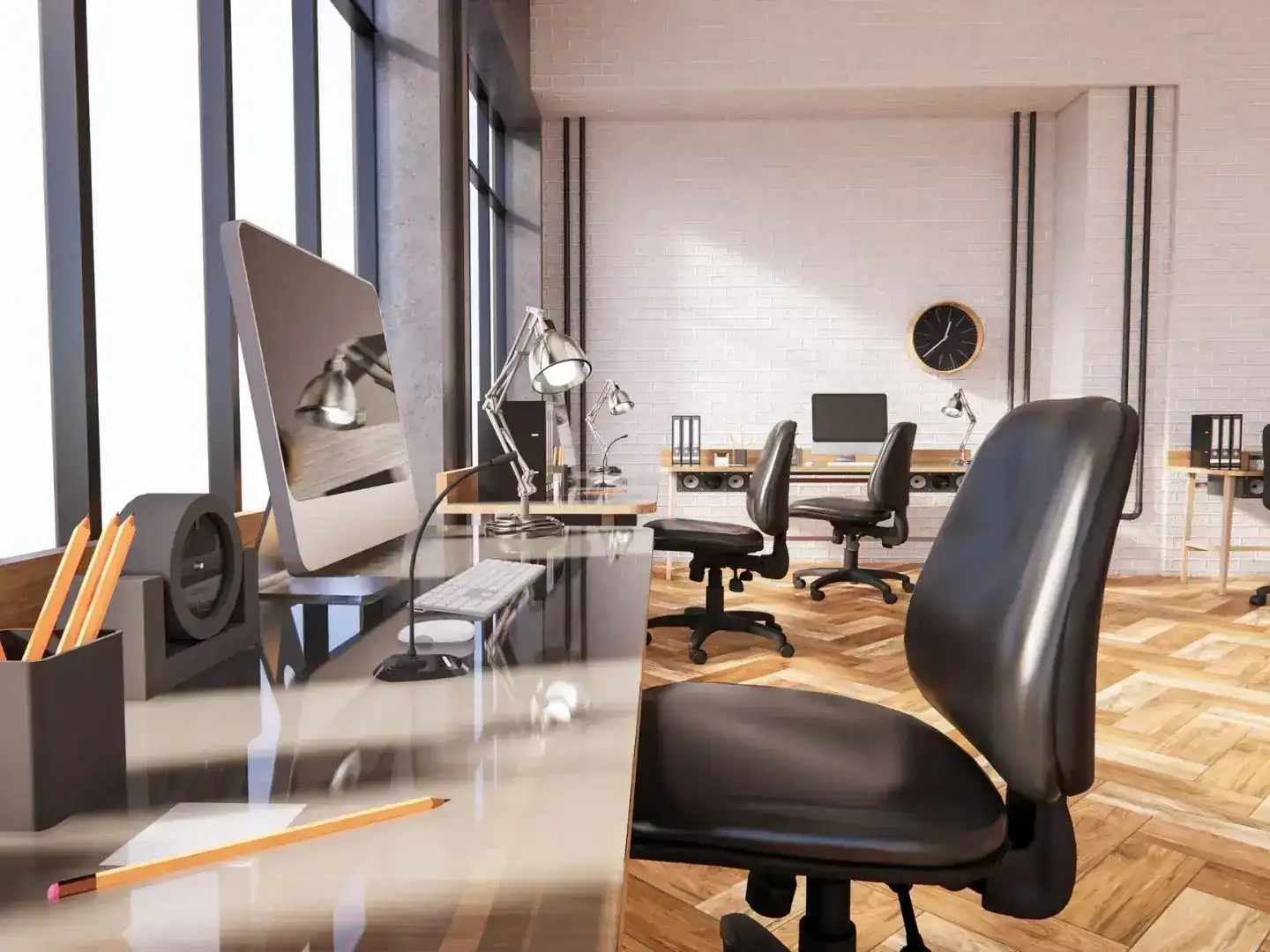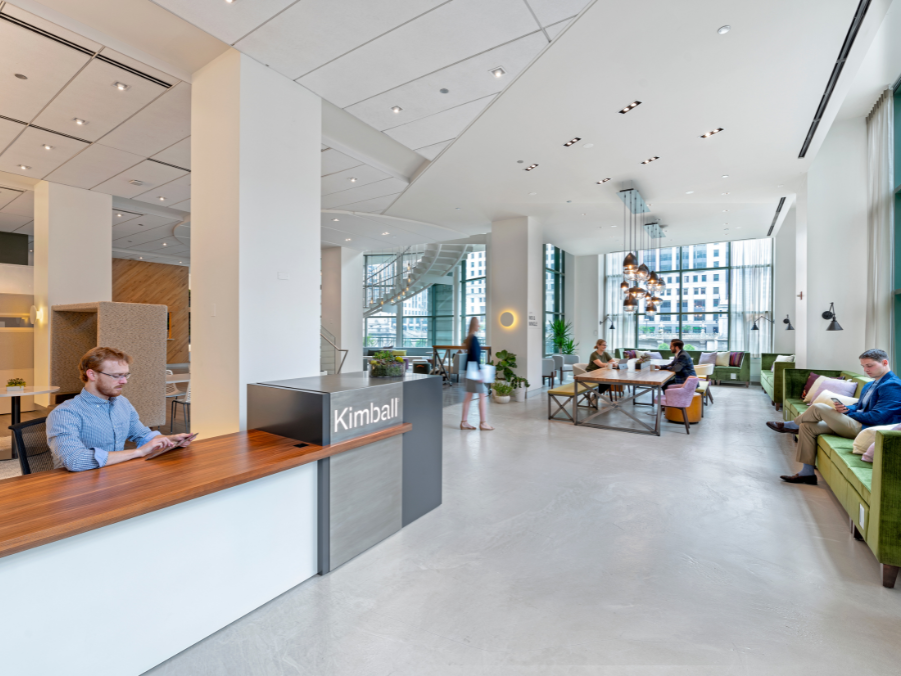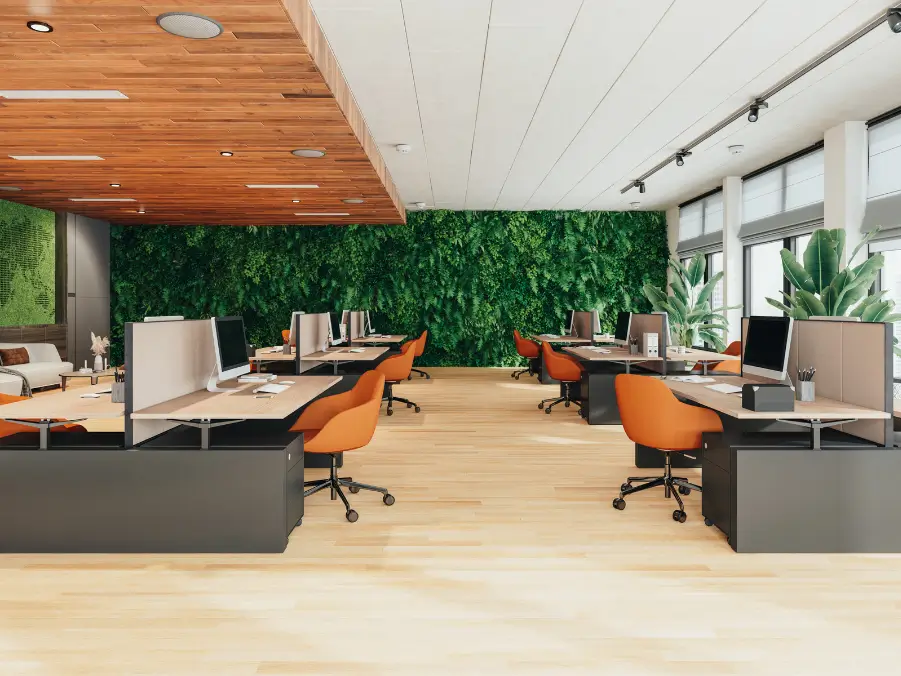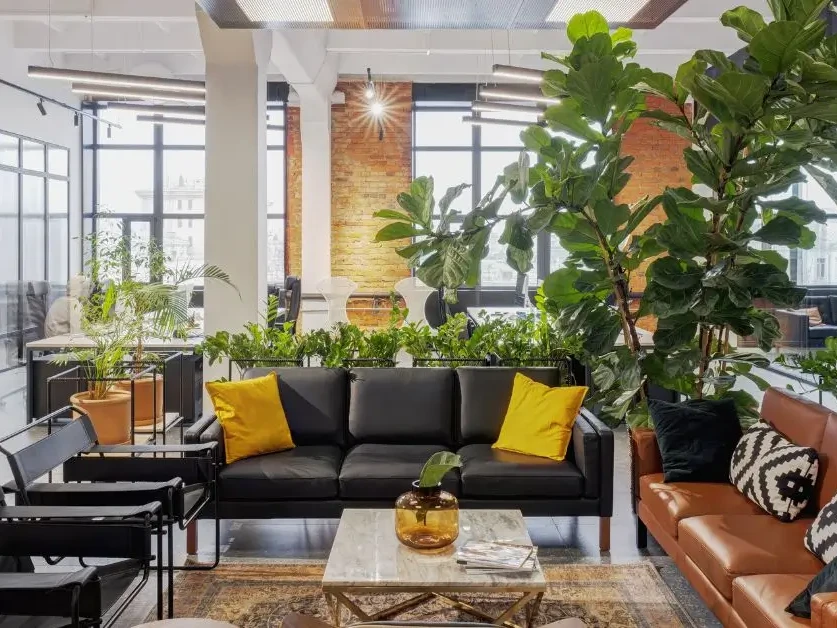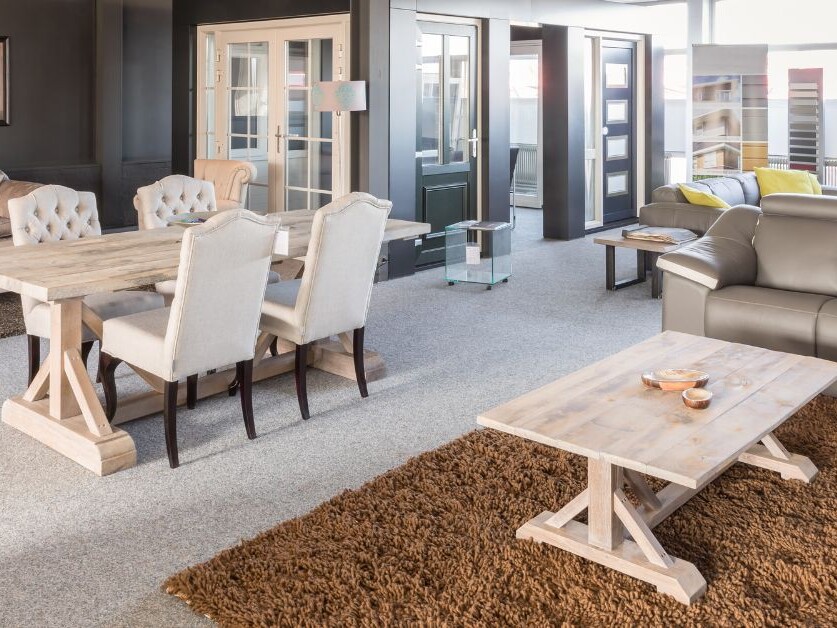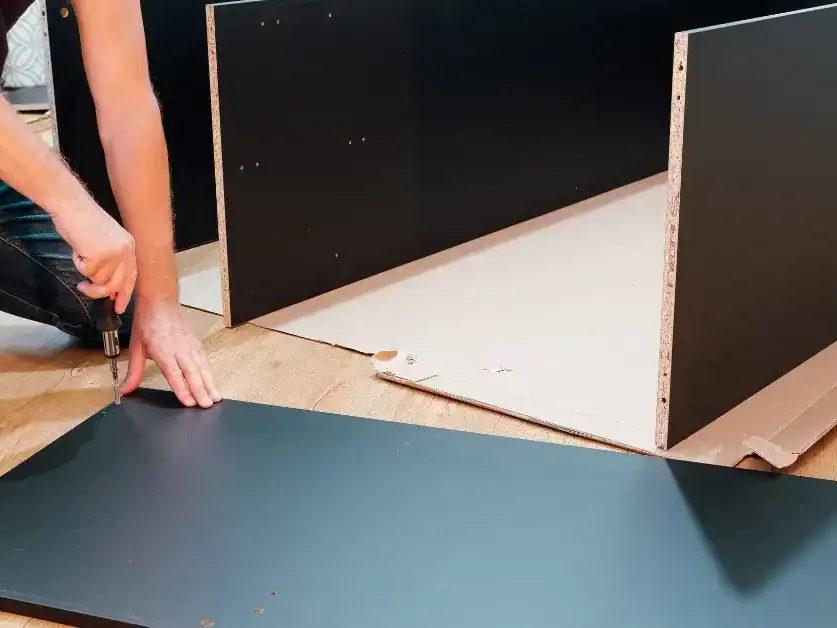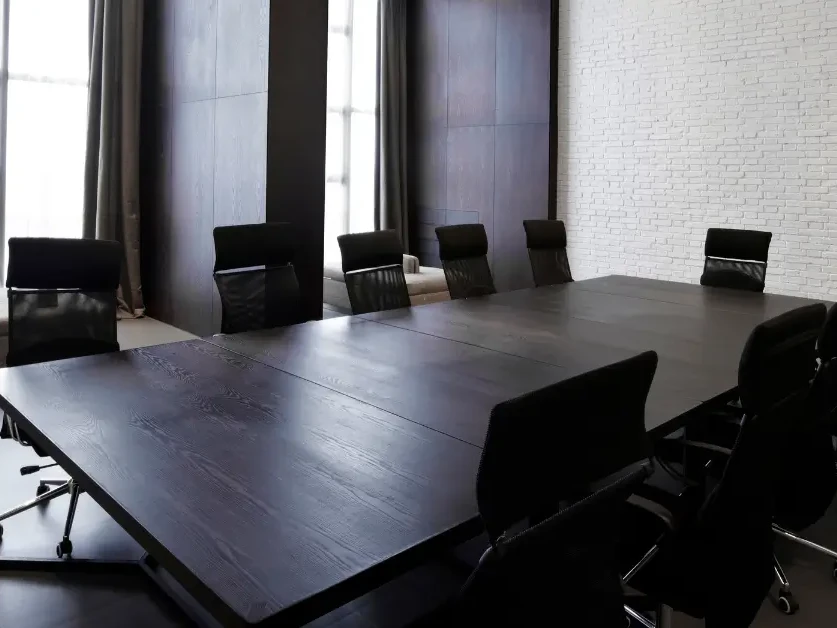October 10th is recognized globally as World Mental Health Day. It is a day dedicated to raising awareness about and promoting mental well-being. Often, discussions about mental health focus on support systems and personal practices. But the physical environment where we work plays a crucial role in our overall mental wellness. At Environments Denver, we believe that a thoughtfully designed workspace is essential for fostering a healthy, productive, and supportive work culture.
In honor of World Mental Health Day, we offer tips on what you can do to better the mental health of your employees. Specifically, we’ll look at workplace renovations, smart furniture choices, and the creation of safe spaces. All of these elements can contribute to the well-being of your team. By prioritizing mental wellness in your office design, you can create an environment that encourages collaboration, reduces stress, and enhances the overall well-being of each member of your team.
The Impact of Workspace Design on Mental Health
The design of a workplace can significantly affect how employees feel and perform. From the layout of the office to the type of furniture used, every element can make a difference. In fact, it can influence mood, productivity, and stress levels. A well-designed workspace can promote positive mental health by providing comfort, reducing distractions, and encouraging social interaction.
Key Benefits of a Wellness-Focused Workspace:
- Reduced stress: Comfortable and ergonomic furniture can minimize physical strain, which in turn reduces stress.
- Enhanced focus: A well-organized workspace with adequate lighting and minimal distractions helps employees concentrate better.
- Improved collaboration: Thoughtfully designed spaces that encourage teamwork can foster a sense of community and support.
- Increased job satisfaction: When employees feel their work environment is designed with their well-being in mind, job satisfaction naturally increases.
Tips for Creating a Mentally Healthy Workspace
Here are some practical tips on how to design or renovate your workspace to prioritize mental wellness and create a supportive environment for your employees.
1. Invest in Ergonomic Furniture
Ergonomic furniture is essential for both physical and mental well-being because poor posture and discomfort can lead to physical pain. And that discomfort, in turn, can contribute to stress and decreased productivity.
How to implement
- Ergonomic chairs: Choose chairs that support the natural curve of the spine, have adjustable height, and provide good lumbar support.
- Sit-stand desks: Offer adjustable desks that allow employees to alternate between sitting and standing, reducing the risk of back pain and encouraging movement.
- Proper keyboard and mouse placement: Ensure that desks are designed to keep keyboards and mice at a comfortable height, reducing strain on wrists and shoulders.
2. Create Collaborative Spaces
As you well know, collaboration is key to innovation and productivity. But it can also foster a sense of community and support among employees. That’s why designing spaces that encourage teamwork can improve mental wellness by promoting social interaction and reducing feelings of isolation.
How to implement
- Open collaboration areas: Design open spaces with comfortable seating and movable furniture that can be reconfigured based on the team’s needs.
- Breakout rooms: Provide smaller rooms or areas where teams can gather for focused discussions or brainstorming sessions away from the main work area.
- Technology-enabled spaces: Equip collaboration areas with the latest technology to facilitate seamless communication and idea-sharing, both in-person and virtually.
3. Designate Quiet Zones and Safe Spaces
While collaboration is important, so is having a place to retreat and recharge. Designating quiet zones or safe spaces where employees can relax, meditate, or work in solitude can significantly reduce stress and enhance mental clarity.
How to implement
- Quiet rooms: Create rooms with soft lighting, comfortable seating, and soundproofing. These spaces will allow employees to take a break, meditate, or focus on work without distractions.
- Wellness corners: Designate areas in the office with calming elements. They may include plants, soft music, and relaxation tools such as yoga mats or mindfulness apps.
- Private pods: Install privacy pods. Employees can use those to make personal phone calls, engage in one-on-one meetings, or take moments of quiet reflection.
4. Maximize Natural Light and Greenery
Natural light and indoor plants have been shown to boost mood, reduce stress, and improve overall well-being. That’s why Incorporating these elements into your workspace design can create a more inviting and health-promoting environment.
How to implement
- Windows and skylights: If possible, maximize the amount of natural light in the office by installing large windows or skylights. Next, position workstations near these sources of light to benefit from the positive effects.
- Indoor plants: Incorporate plants throughout the office to improve air quality and add a touch of nature. Consider low-maintenance plants known for their air-purifying qualities, such as snake plants or peace lilies.
- Biophilic design: Take inspiration from nature in your office design. For example, consider using natural materials, earth tones, and organic shapes to create a calming environment.
5. Incorporate Flexible Spaces
Flexibility in the workspace allows employees to choose environments that best suit their tasks and moods. To that end, provide your employees with a variety of workspaces. They can range from quiet zones to collaborative areas, giving employees the freedom to work in ways that support their mental well-being.
How to implement
- Multipurpose areas: Design spaces that can serve multiple functions. For example, have a room that can be used for team meetings, individual work, or as a relaxation zone, depending on the need.
- Movable furniture: Use furniture that can be reconfigured to support different work styles, whether it’s for solo focus work or team collaboration.
- Activity-based working: Encourage a workspace where employees can move freely between different areas based on their tasks. This flexibility will promote physical movement and reduce the monotony of staying in one place.
Conclusion
As we celebrate World Mental Health Day, we recognize the role our physical environment plays in supporting mental wellness. By investing in thoughtful workplace design and renovations, you can create a space that not only enhances productivity but also promotes the well-being of your employees.
At Environments Denver, we specialize in creating workspaces designed with wellness in mind. Visit our website or contact us to learn more about how we can help you design a workplace that fosters mental health, collaboration, and success.
This World Mental Health Day, let’s commit to creating environments where everyone feels supported, valued, and empowered to do their best work—every day.

